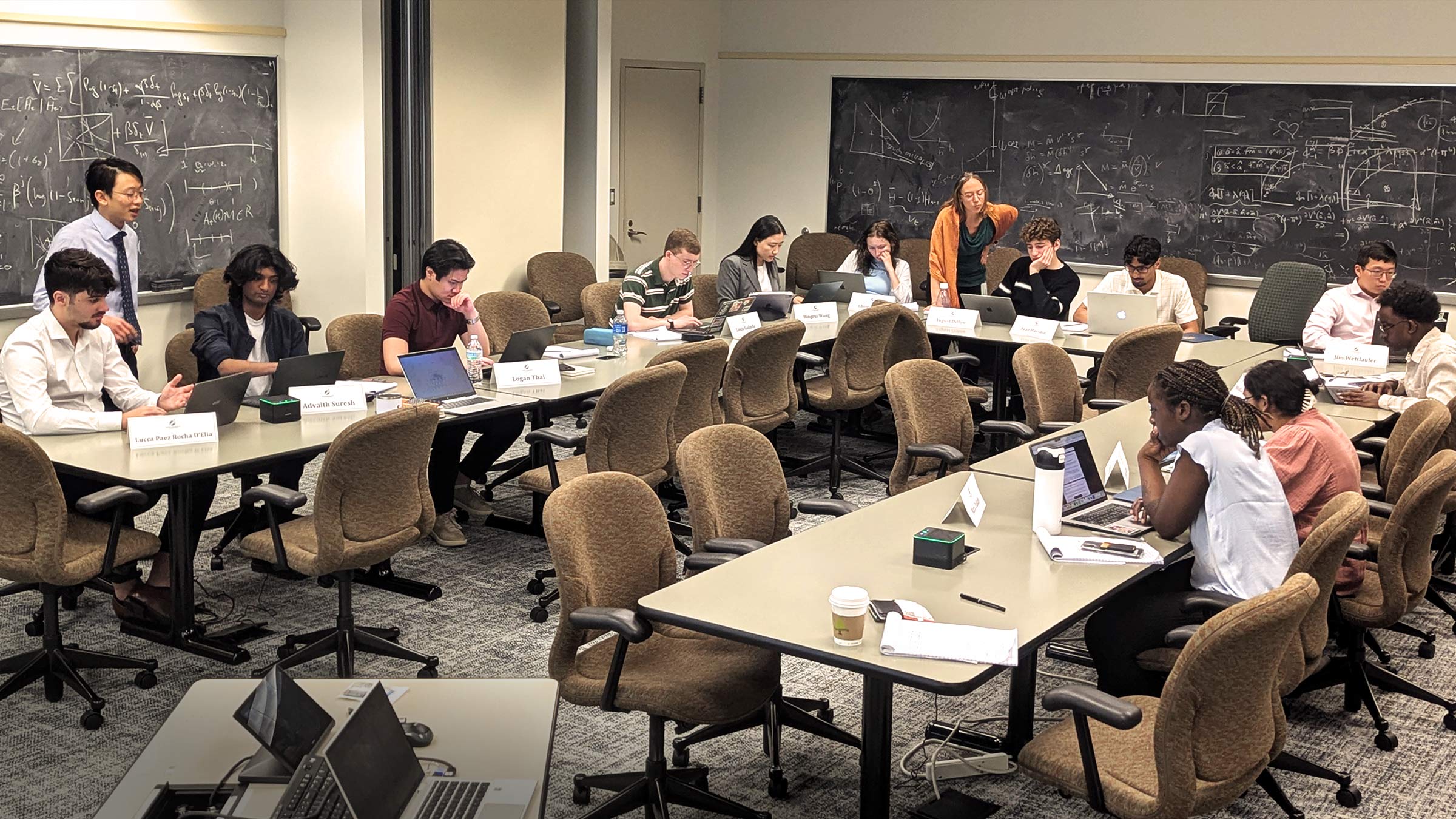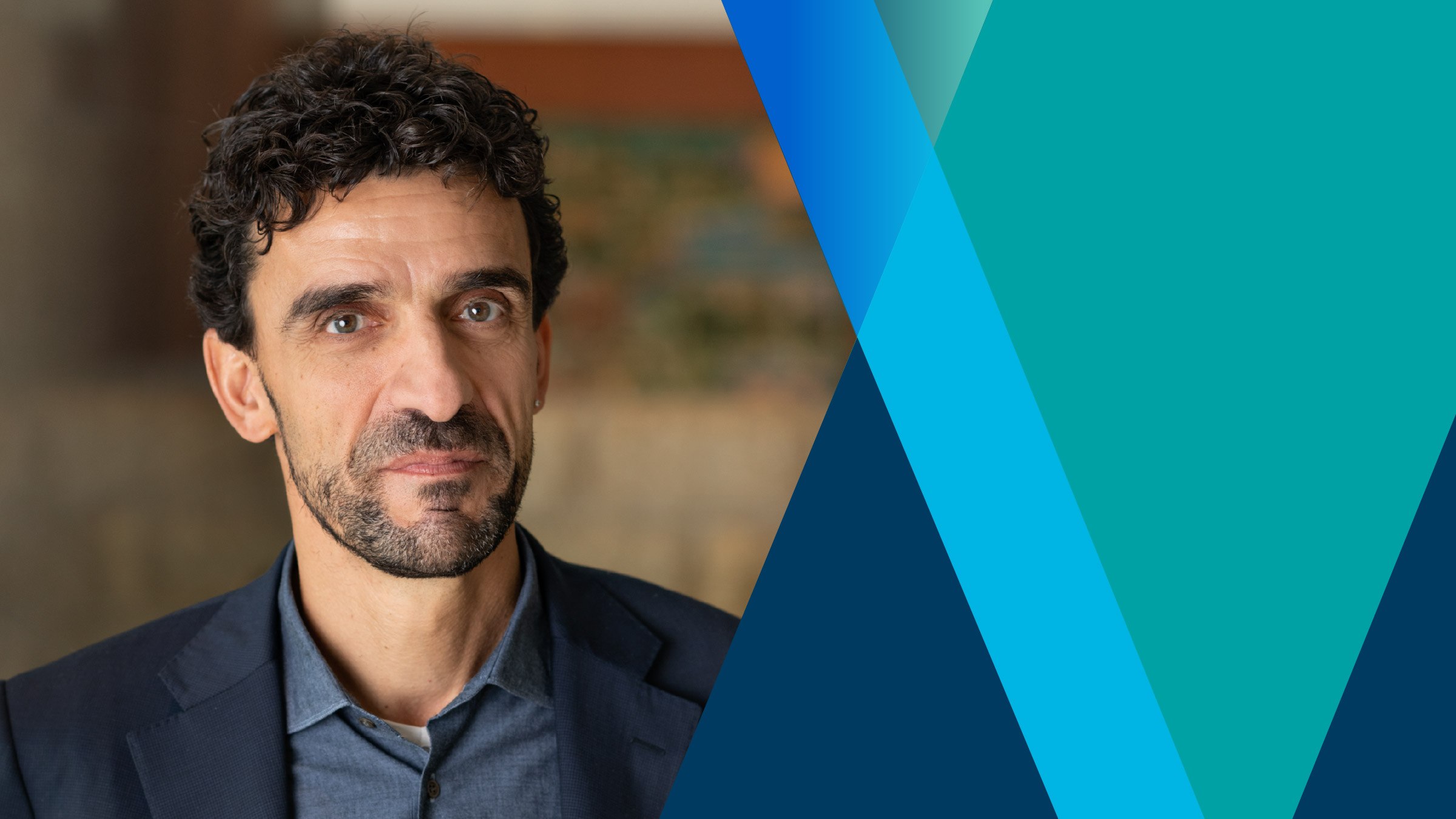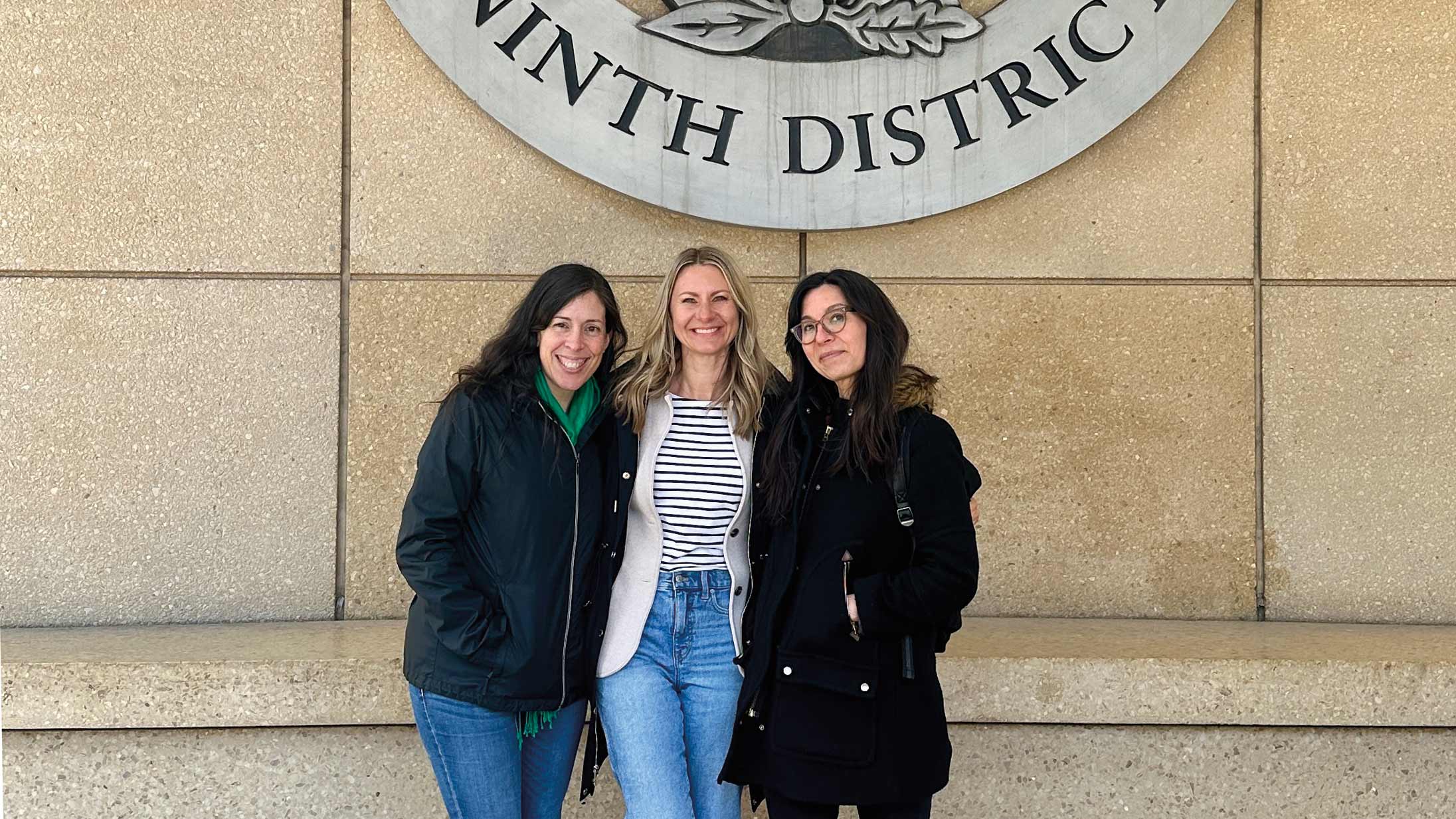“To be effective, academic theories have to confront hard political realities, and complicated concepts have to be communicated simply and concisely,” says Abigail Wozniak, who became the first director of the Opportunity & Inclusive Growth Institute in February 2019.
With a B.A. from the University of Chicago and Ph.D. from Harvard, she joined the faculty of the University of Notre Dame in 2005. In 2014, she took leave from that teaching position to join President Barack Obama’s Council of Economic Advisers as a senior economist, bringing much-needed expertise on labor force participation.
“While there, I learned important lessons about moving research insights into the policy arena,” she recalls. The same principles apply at the Institute, she says, where research is most valuable when it can be applied to people’s everyday lives.
Wozniak’s own scholarship has focused on migration within the United States and changes in job tenure, as well as additional topics ranging from job screening policies and racial discrimination to changes in banking compensation due to industry deregulation. Her work on U.S. geographic mobility gained wide media attention recently when the U.S. Census highlighted a shift she has documented for years.
Managing Editor Douglas Clement asked the questions.
Why the Institute?
The Fed’s dual mandate is to pursue price stability and maximum employment. Distributional issues have generally been considered outside its purview. Given that, why has the Minneapolis Fed created this Institute?
It’s true that distributional issues have not generally been a forefront issue for the Federal Reserve. But I would argue that’s in part because when the mandate was set down in the Humphrey-Hawkins Act of 1978, it was a reasonable assumption that expanding the economy was going to benefit people broadly. That’s what the data showed, and we’d had a multidecade experience where that was the case.
That has changed fairly dramatically. In the past several decades, we’ve experienced a major shift in that as growth has accumulated, and its benefits have been shared unevenly to people and places. There is now much more disparity in how people are faring both geographically and across skill and demographic groups in the United States.
There are reasonable questions to ask about this. In light of these facts, is the economy fully functioning for everybody? Are we truly meeting the full employment part of our mandate when we see such disparate outcomes?
A second question, which is much harder to answer, is: Does this have any impact on the functioning of the economy? Are distributional concerns connected to the types of economic performance that we experience? These are very much open research questions.

What does the Institute add to the discussion? What advantages do we have in the broader effort to address opportunity barriers?
It’s important to understand that the Federal Reserve System is well aware of these issues, and researchers in our various departments around the System are thinking hard about these questions. But there hasn’t been quite the same focused research effort around them that is comparable to the Fed’s efforts around macroeconomics, financial market functioning, and similar areas.
So the Institute aims to serve, in part, as a clearinghouse for all of the great Fed System research that’s already going on but that could benefit from being better connected.
It also gives us greater connection to the research world beyond the Fed. We’re building stronger ties with scholars at universities, agencies, and international organizations that are also studying questions about how the economy functions for people overall.
The Minneapolis Fed has two advantages. One is energy and leadership from [President] Neel Kashkari, who cares deeply about these issues and who was excited about trying something new within the structure of the Federal Reserve System to create a home here for the Institute.
A second advantage is that the Minneapolis Fed has a long, well-developed history of building out a research community between the Fed and academia. We have a very long partnership with the University of Minnesota, of course, but we have deep connections to researchers at other universities as well.
Now, I don’t at all want to suggest that other Reserve Banks don’t have that to varying degrees, but I think we’ve been very successful here at building cross-institution relationships. We hope to leverage that into an even broader set of relationships, potentially moving into fields of social science beyond economics that can address these questions—again, about how is the economy performing for everyone? How do folks experience that, and what do they need for greater welfare?
This Fed has such a great track record of building strong research connections outside its own walls. So that’s the second reason to have us here in Minneapolis.
I would argue that a third reason is that it’s important to have a balanced perspective on these questions. To some extent, the Midwest is a unique place for that balance in the U.S. right now. It’s not irrelevant that we’re in the middle of the country.
Broader perspectives
You’ve just described the network of researchers the Institute is building. Would you tell us more about the visiting scholar program, soon to be in its fourth cohort?
Other Reserve Banks host visitors from academic institutions to spend time with Fed researchers, talk about projects, and share what they’re working on. The visiting scholar program here at the Institute expands this considerably. Several things are unique to us. We have an open application process. We work hard to recruit folks who are doing frontier research close to the Institute mission areas, but we welcome applications from all scholars, and we have an open review process for that.
Second, we’re aiming to draw in a much broader range of people than have traditionally connected with Fed Research departments. We have yet to host scholars from outside of economics, but that’s a real goal for the 2020-21 class of scholars. We want to bring in a broader set of perspectives and, importantly, figure out how to make it a productive time for both visitors and people here. It can be very challenging to have productive conversations across academic fields, but we all agree that they’re extremely important.
We have some advantages that will help us figure out how to do that. We’re able to fund scholars who come here to visit for a period of time, allowing them to set aside other obligations for a while. That frees them up to have some of these conversations and hopefully generate new ideas for how to investigate these questions.
Reaching out
Could you describe the Institute’s two advisory boards—the academic Board of Advisers and the Community Advisory Board?
The academic advisory board comprises leading academic researchers whose work is focused in one way or another on the well-being of folks throughout the earnings distribution. They are all asking questions about how do people access opportunity, how do they improve their own lives, and what kinds of policies can help improve outcomes for them and their kids. It’s a big tent, and there are a lot of questions that fall under it, but that’s the common thread running through the body of work that advisory board scholars do.
They’ve all been very generous with their time, and each has made valuable contributions to the Institute’s work, selection of scholars, research topics, and the like. The next phase is to create a sense of community among advisory board members, giving them ways to provide useful, ongoing input into the direction of the research, helping them tap into our research community, and providing ways for them to help us broaden the community we reach.
That’s tough to do. These are extremely busy people. One of our advisory board members, Esther Duflo of MIT, just won the Nobel Prize. She probably won’t get a minute’s rest for the next 365 days!
So we have to be strategic about how we engage with scholars who are working at that level. That’s an exciting challenge, one I want to put into practice. This is not listed on our website. Every single adviser has contributed in one way or another. Building those relationships productively and efficiently is a big goal going forward because they’re essential to the success of the Institute.
The Community Advisory Board was formed in conjunction with the Minneapolis Fed’s Community Development department, which has a tremendous network throughout our district and in our own backyard, the Twin Cities. A key objective of the Institute is not just to grow research connections but also to reflect what we’re learning back out to the public, to share the state of knowledge. To do that, we need community partners who can tell us how this information is being received and tell us what questions are important to a broader spectrum than typically read academic research papers. The Community Advisory Board advises on all of those topics.
Housing, opportunity, and inclusive growth
In the vision you laid out last year for the Institute, you mentioned the program of conferences that you host twice a year. The most recent of these focused on housing. Could you tell us about it? How is housing connected to issues of opportunity and inclusive growth?
The conference—which was co-organized with the Brookings Institution’s Future of the Middle Class Initiative—was designed to answer, to the degree possible, some specific questions.
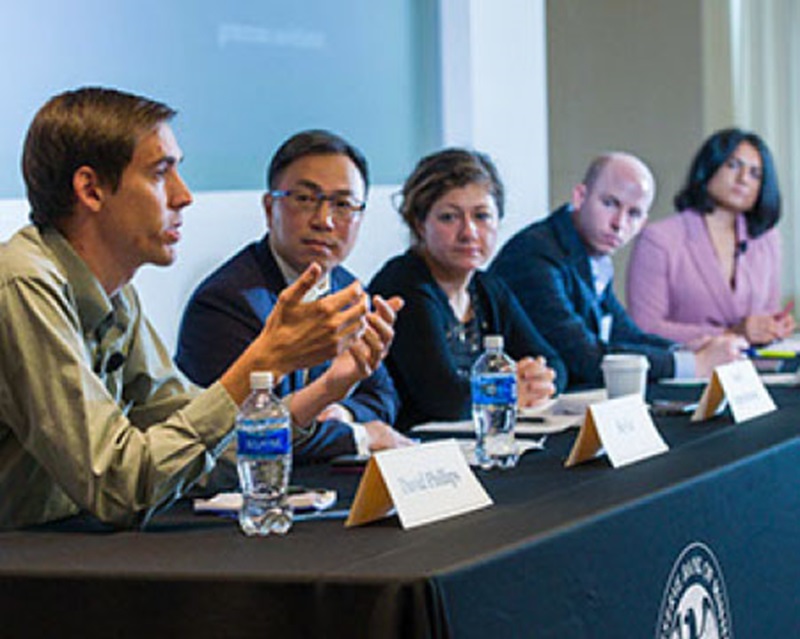
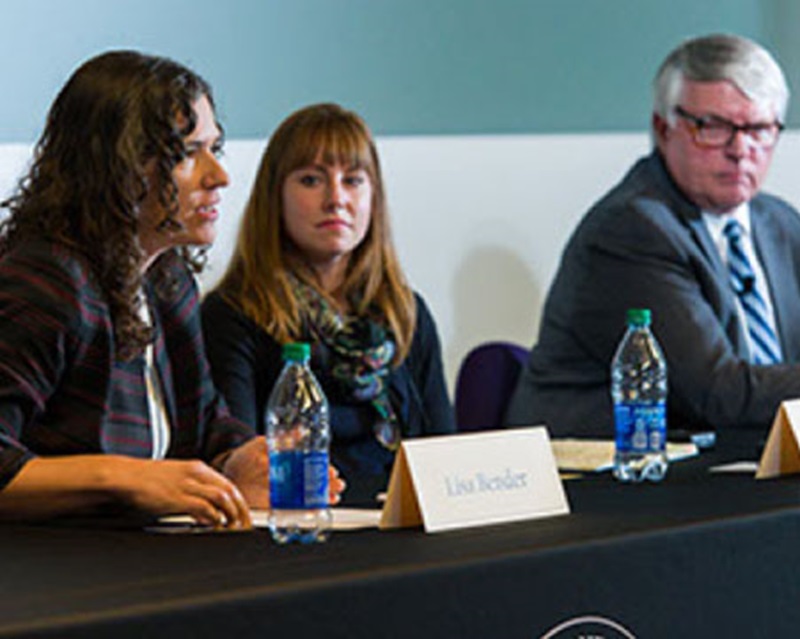
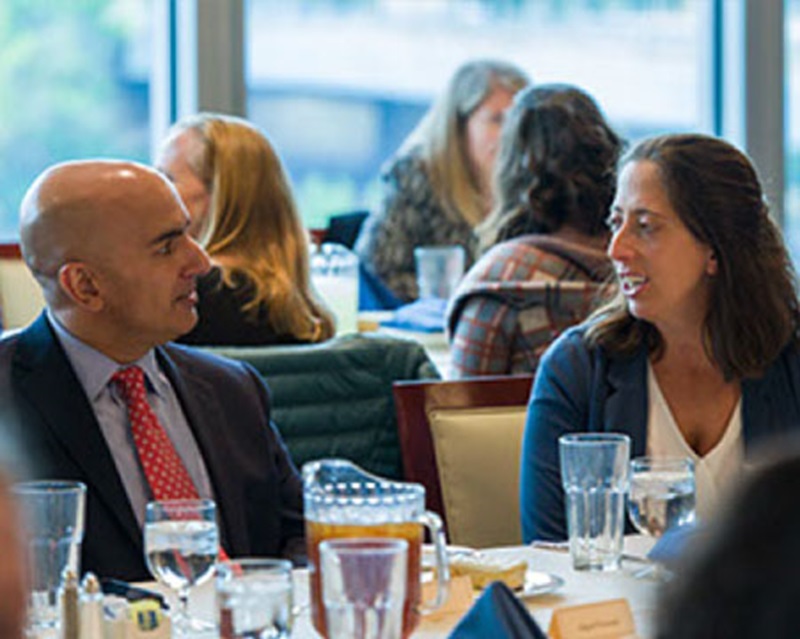
The first: How might you expand housing access in a city? How to do that is a very difficult question. And there are important voices that doubt whether it can be done without an extremely top-down, command-economy approach.
A second question is, Why would you want to do that? Why would we need to facilitate housing access in some cities relative to others?
The answer to the second question is, in essence, what makes this an Institute conference, which is that there’s now a growing body of research documenting that economic activity over the past several decades has been reorganized across [geographic] space. This isn’t news to anybody, really, but we are working very hard as a profession to understand why this happened, and then also to understand the consequences of that.
If economic activity has been reorganized across space, we have to think about whether we have a housing infrastructure that’s adequate for it. It means some cities where opportunity has expanded might need to expand their housing infrastructure. That’s important for linking workers to jobs. It’s important for linking families to wage growth and to quality infrastructure.
There’s a whole other set of challenges that goes along with cities that have not experienced this growth and opportunity. On this, I’ll highlight the work of the Boston Fed, which held a conference examining these regional disparities and thinking about what we might do about those, which is a related but also important question.
Our focus was: Suppose we need to grow housing infrastructure in a specific area. How do we do that? What kinds of benefits to folks will that provide? Those are the questions that our October 2019 Institute conference was designed around.
We worked very hard to make sure the panel sessions were genuine discussions in which people answered questions from moderators, from each other, and from participants. A question ends with a question mark, so there should be an answer, even if the answer is, “I don’t know.” We’ve prepared a summary of the conference research.
A number of points of consensus emerged. One point is that while it’s a complicated issue, we do have clear ideas about how to expand housing infrastructure that will improve access for a broad population, and that such housing is important for connecting people to growing opportunity. That’s the conference in a nutshell.
The value of being in the Midwest
You mentioned earlier the importance of having a balanced perspective on these issues, and you said, “It’s not irrelevant that we’re in the middle of the country.” What did you mean by that?
Living in the Midwest, you experience the full diversity of how economic change occurs and how different population groups experience that change. Just thinking about housing, our conference topic, people often use the example of San Francisco as a booming economy, so people should move there to improve their prospects.
But my personal favorite examples are Columbus, Ohio, and Cleveland, Ohio. Columbus has grown tremendously, and Cleveland has experienced a flat trajectory of employment and population over the past several decades. So it’s not that no cities in the Midwest are expanding the opportunity that they have. That’s definitely happening. But it’s almost as difficult for folks to think about changing location two to three hours away from family, from the services and neighborhoods that they’re used to.
I think being in the middle of the country is valuable for the way much of the discussion happens, especially the tendency to consider the middle of the country a bit of an afterthought and think that the coasts just have to figure out how to take everybody in. To anyone who lives here, that’s clearly not at all the case. Having the Institute in the Midwest grounds the discussion with that reality.
A “nonjudgmental approach to human behavior”
Why did you become an economist? What excites you about this field?
You know, it’s important for me to reflect on that question—What excites me about economics?—because the field has gone through a lot of very difficult conversations in the past 12 to 24 months about problems within the profession. It’s been a short amount of time, and we’ve had so many conversations that I never thought we would. Even just five years ago, I couldn’t foresee the field discussing questions about lack of diversity, a hostile environment toward many, and the like.
So, many of us have asked ourselves exactly that question: Why are we economists?

For me, the answer is that, first of all, I appreciate the combination of theory and data. Theory to me is like philosophy. You have to develop an intuition about what people are trying to do. Why do you, as an economist, think that? Does it make sense? Can you explain that to other people? In short, you need to have a framework for why you think behavior is what it is. I like the interplay between that framework and the data, assessing the theory against data. Economics does that really well.
Also, economics places the individual at the center of deciding what is best for them personally and behaving accordingly. It attributes a lot of autonomy to individuals. Economists rarely think that they know for sure what’s best for somebody else.
That’s an admirable stance, and it’s important in the world we live in, that everyone pause and ask, “Do I know what’s best for somebody else, or are they actually pretty good at figuring out what’s best for themselves?” It is an importantly nonjudgmental approach to human behavior to say, “I’m going to assume you know what’s best for you.” And economics takes that pretty seriously.
There definitely are challenges to that ideal. Behavioral economics is something to take seriously, and occasionally my papers reflect that behavioral explanations might be right. Maybe people aren’t using full information. Maybe they aren’t able to fully digest all of the options in front of them. Those are very real phenomena.
But at the end of the day, we economists think people are trying to do their best for themselves. That’s an important perspective.
Do you recall when you first became interested in the field, first thought that economics might be a valuable way to understand human behavior?
Well, I guess the true story of how I ended up being an economist starts when I was in high school. At the time, in the late ’80s and early ’90s, the U.S. was struggling economically against Japan. There was a narrative about us getting crushed by Japan. “They’re so much better at manufacturing. Their schools are better. Their economic growth is enormous.” And we were struggling.
I was a high school student in Green Bay, Wisconsin, and we didn’t have a particularly aggressive economics curriculum. We didn’t have separate courses on it. But we all heard this narrative about Japan’s powerful economy and our weak economy, and it shaped how people behaved.
And I thought, well, I can go study this. I’m deeply interested in how we resolve these issues. It just seemed like a fascinating set of questions. The honest truth is, I didn’t know any more than that this was an interesting set of questions. If I had known what it actually entailed, I might’ve been too afraid to try!
But I got into a college with a good economics program and got through that. And then went to graduate school; again, without a very detailed idea of what I was getting into. But, you know, just coming back to that set of questions was really important.
I found the approach in economics appealing. I don’t think everyone does. And I wouldn’t say that it’s the only angle we need to have on these questions. You know, economists tend to say, “I like economics because economics is the best way to understand the world.” I don’t want to suggest that. But for me, I’ve always liked the approach that it takes to the questions.
But I also think it’s essential to draw from other disciplines to come up with a more complete story on these questions.
Changing jobs less often
You specialized in labor economics, and you’ve done a great deal of research on geographic mobility of the workforce. Among other insights, you found a significant decline in mobility and looked into factors behind it.
Can you talk about that research and what those factors might be?
Initially, we documented a 30-plus-year decline in geographic mobility and, in later work, we looked at other types of “labor market adjustments.” A geographic move is just one type of adjustment you could make. You’re basically switching labor markets. You’re moving from, say, the San Antonio, Texas, labor market to the Denver, Colorado, labor market area. You’re changing the set of opportunities available to you.
But there are other big labor market changes. A big one is to change employers. That happens much more often than long-distance geographic moves. Another is to switch labor market status; for example, to go from being employed to unemployed or to out of the labor force. Another change people make is between industries, or occupations, or both industry and occupation.
We found in this later work that all of these types of transitions are declining. So it’s not just geographic mobility, it’s not just that workers don’t want to move from one labor market to another for some reason. Even within markets, people are making these big changes less often.
Why is this happening? Why is the American labor market becoming more rigid?
The conclusion we drew from looking at this broader set of indicators is that part of what’s happening with geographic mobility is really a labor-market story. If it’s harder to make a job change, it’s probably also harder to make a long-distance labor market change.
Now, that’s not the experiment-style evidence we always like to have, but it sure looks like something changing in the labor market is also influencing these geographic moves that people make. It’s not to say that’s the only story, but that’s part of what we took away from that.
Then the next question—this is like peeling an onion—becomes, well, why are all of these measures of adjustment changing?
We don’t have a really good answer to that. That’s an extremely hard problem. In the Brookings paper, we explore and rule out a number of explanations that initially occur to people.
One we rule out is a role for the aging population. There is some debate about that with other scholars, but it’s unlikely to be the whole story. We don’t give a whole lot of weight to that potential explanation.
Another we eliminate is the possibility that the decline in geographic mobility might be driven by dual-career couples. I’m going to give that one a big “no.” It’s certainly important, but most of the rise in dual-earning households happened by the end of the 1980s, prior to this decline in fluidity. Another point is that a labor market that’s good for one person is probably good for the other person as well. So that’s one story we think doesn’t explain the decline.
A final factor we rule out is health insurance lock—the idea that you don’t want to change employers because your health insurance is tied to your current employer, and perhaps you’ve developed a condition. That’s a plausible concern, but it doesn’t explain the declines we see in the data.
Our work points to a role for some kind of change in the labor market, related to when and how often workers change jobs, but right now that remains a bit of a black box; we simply don’t understand what’s behind this phenomenon. We don’t know what has changed in that part of the employment relationship to drive a decline in fluidity over three-plus decades.
An evolving work relationship
Does decreased labor market mobility of the various sorts you’ve described—whatever the causes—tell us anything about the health of the U.S. labor market generally?
We don’t know the answer to that yet either. We don’t collect a lot of data on how firms find new workers. We don’t have a comprehensive source for what they’re thinking about when they bring on a new hire, what they’re looking for. We don’t have a comprehensive source for what workers are thinking when they look for new work.
So that’s why we call this relationship a black box.
But the research I’m part of tries to get inside the box a little. We’re looking specifically at how tenure with employers has changed. How long do people stay with an employer before changing?
A question we get a lot is, “How can it be that these labor-market adjustments are declining since ‘we all know’ that employment is much less stable than it was in the past?” But we don’t actually know this is true.
So our latest project pursues that in more detail. A high-level summary of what we’re finding is that, in a sense, everybody’s right.
It’s true that very long-term employment relationships are becoming less common. But there are still about a quarter of men, 40 years and older, who have been with their employer for 20 years. It used to be about 35 percent, so there’s definitely been a decline, but it is still a lot of workers who have a 20-year or longer relationship with their employer. Still, that’s been a change for men.
Women have actually increased their connection to their employers. It’s more common now for women to have those long tenures than in the past.
But what has also changed is the short end. Conditional on getting a new job, you’re more likely to make it to a year of employment than you were in the past. It wasn’t always a very salient feature of the economy, but people would start jobs and leave them quickly three decades ago. There’s just a lot less of that now. And that is something that has helped drive this decline in transitions.
Now, is that good or bad? We don’t know the answer to that. There are stories that cut both ways, and they’re all plausible. We need a lot more work and, frankly, a lot more creativity. We also need some help with data collection. I always emphasize this. Statistical agencies need funding to collect this information; it’s not something we readily have. We need more information to understand what’s actually happening, particularly with those new hires, with workers in the first year of their job.
The profession’s problems
You referred earlier to questions that are being asked now about the economics profession that weren’t asked five years ago. I’d like to come back to that. As you know, women are underrepresented in the discipline, especially at the highest academic levels. That’s even more the case for minorities.
The American Economic Association just released results of a survey of members in which some refer to a “hostile environment” within the profession.
What’s your reaction to those findings? Is this something that you have faced as a woman in economics? And what can be done about it?
First, I should say that I’m really happy that the AEA did the survey. It’s probably fair to say they should’ve done it a long time ago. There have been a number of useful conversations about how that professional governing body is set up. For example, the AEA president serves for one year, and it’s largely an accolade. That person is not in a position to change that organization. People are thinking about that harder now. So I’m glad they did the survey. I think they should have done it earlier. And I believe we’ll see even more of those discussions.
But it’s important to recognize the limits of that professional organization. Personally, I would like to see a much more serious approach from universities and employing institutions.
I believe that women in many academic departments have had negative interactions. Economics has a problem, and it needs to be better.
Is it something that you have faced?
Yes. I think every woman has. And I think every person of color and every person who has not been reared in a Ph.D.-holding family has faced these interactions.
It’s not rare. It’s not something I talk a lot about, but I certainly understand. I at least feel that I understand what people are going through. It’s hard to talk about that in a coherent way for me. I still don’t have a good way to summarize everything that’s happened in the past two years.
What can be done to improve the field in this regard?
First of all, let me say that I’m super excited about the Institute as a place to try to do better. The Institute is pretty much a blank slate. We have access to a great amount of talent. We are housed in an institution that takes these workplace issues more seriously than many institutions that employ Ph.D. holders.
We have a great opportunity to lead by example. My hope is that in growing our scholars’ network and, to some extent, growing the number of full-time Institute economists, we have a real opportunity to show that you can hire women, you can have women run things, you can hire people of color into intellectual leadership positions. In short, you can have something that looks more representative than many academic departments do.
This diversity is not going to be served up in an institution’s job application inbox. We all need to make more of an effort to network within the profession, with people who look different and are working on different things. But it’s very possible. I am really excited about that.
In addition to pushing continuously on inclusion, we have to recognize that there are also bad actors who don’t get sanctioned appropriately.
To build on your inclusion efforts and make them last, an institution has to send a very strong message when there’s an instance of bad behavior. That gets everybody to sit up and take notice, and to think a bit harder about what they’re doing.
Looking ahead
Let’s close by talking about what the Institute has achieved so far. You’ve just made very clear that one thing you’ve sought to do at the Institute is make it an example of inclusive growth in economics.
Could you elaborate on that, and share other thoughts about what the Institute has accomplished and where it’s heading?
Well, I would argue that our scholars’ cohorts could be a model for the economics profession. People of color have, I believe, been represented at the Institute more than they are in the profession, in every cohort. And this approach was in place when I came on—early leadership on this from Mark Wright, Neel Kashkari, and Alessandra Fogli made it happen. We’ve had women well-represented too, better than in the profession as a whole.
We’ve been thinking more creatively about how to engage with scholars in a way that’s diverse and inclusive writ large. By that I mean pulling from institutions that are not just the top five major research institutions. We’re reaching out to different types of places than we normally hear from to include a broader range of scholars. We’re hoping to potentially engage with students still working on their Ph.D.s, especially junior or early career economists all the way through the discipline.
We’ve also been able to create opportunities for our staff economists to interact with scholars that they never would cross paths with otherwise, and that’s been valuable for both.
So the first thing we’ve achieved is to set the tone and establish a culture where inclusion and broad thinking are expected and the norm. And that hasn’t been easy. It’s much easier to bring in economists who have lots of overlap with people in the Research department. But to the great credit of people in the Research department here, they’ve been willing to open their doors to people from outside who are doing pretty different things. That culture has been established, and that’s really important.

I also believe our reputation is increasingly established. Not everyone knows our exact name, I will admit [laughter]. We have a long name. But it’s less and less often that I reach out to someone and they have no idea that the Institute is here, that it exists. Particularly within the economics profession, it is increasingly well-established. And that’s actually been a pleasant surprise because it can take a long time to move things in academia. This Institute has moved relatively fast, and that’s testament to the great foundational efforts that were in place before I got here.
The next step is to expand that reputation in research circles with a broader set of approaches. We have a few openings on our academic Board of Advisors, and I’m hoping to pull in different types of scholars that way. That’s important for bringing in visiting scholars from outside of economics and making this all fit together. So establishing that reputation has been important.
We’re also learning a lot about outreach. Along with our expanding reputation, we’ve drawn a great number of excellent research papers into our working papers series. So we’re starting to reflect a body of new work that is important for these bigger questions of just how the economy is functioning for everyone, and what are major distributional considerations that we should know about.
We now need to make that much more accessible. Many folks don’t want to engage with a 60-page academic paper—in some cases, that includes academics. So an important next step is to have more ways for people to connect with the information that we’re generating here.





